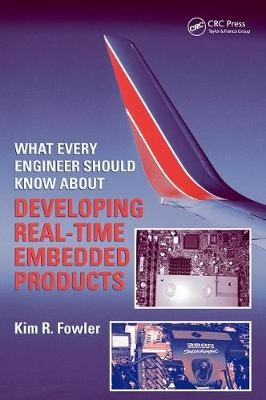
What Every Engineer Should Know About Developing Real-Time Embedded Products
Seiten
2018
CRC Press (Verlag)
978-1-138-41344-3 (ISBN)
CRC Press (Verlag)
978-1-138-41344-3 (ISBN)
Provides the knowledge and insight engineers need to make critical design decisions and offers a guide for preparing and developing projects in different markets. This book lays the basic groundwork for effective processes, covering smaller, self-contained devices and subsystems, ranging from handheld devices to appliances.
You can find them in your wristwatch or MP3 player; they perform specific functions in washing machines, traffic lights, and even pacemakers. Embedded systems are pervasive, ubiquitous, and widespread throughout our daily lives. Developing these real-time embedded products requires an understanding of the interactions between different disciplines, such as circuit design, power, cooling, packaging, software, and human interface. This volume provides the knowledge and insight engineers need to make critical design decisions and offers a clear guide for preparing and developing projects in different markets.
The book begins by laying the basic groundwork for effective processes, covering smaller, self-contained devices and subsystems, ranging from handheld devices to appliances. Highly detailed case studies, which include designing instruments for space flight, implanted medical devices, and military support equipment, illustrate industry best practices and managerial issues. Each case study is detailed in terms of concept, market, standards, integration, manufacturing, and phases. With schedule and estimation templates, this highly functional text presents numerous examples of design tradeoffs critical to successful project development.
Offering even coverage and clarification of the entire development process, What Every Engineer Should Know about Developing Real-Time Embedded Products provides engineers and industrial designers with practical tools to make important decisions, from deciding whether to buy or build subsystems to determining the appropriate kinds of field testing.
You can find them in your wristwatch or MP3 player; they perform specific functions in washing machines, traffic lights, and even pacemakers. Embedded systems are pervasive, ubiquitous, and widespread throughout our daily lives. Developing these real-time embedded products requires an understanding of the interactions between different disciplines, such as circuit design, power, cooling, packaging, software, and human interface. This volume provides the knowledge and insight engineers need to make critical design decisions and offers a clear guide for preparing and developing projects in different markets.
The book begins by laying the basic groundwork for effective processes, covering smaller, self-contained devices and subsystems, ranging from handheld devices to appliances. Highly detailed case studies, which include designing instruments for space flight, implanted medical devices, and military support equipment, illustrate industry best practices and managerial issues. Each case study is detailed in terms of concept, market, standards, integration, manufacturing, and phases. With schedule and estimation templates, this highly functional text presents numerous examples of design tradeoffs critical to successful project development.
Offering even coverage and clarification of the entire development process, What Every Engineer Should Know about Developing Real-Time Embedded Products provides engineers and industrial designers with practical tools to make important decisions, from deciding whether to buy or build subsystems to determining the appropriate kinds of field testing.
Kim R. Fowler
Development Processes. Variations on the Theme. Tools. Case Study 1: Major Appliances. Case Study 2: Telecom Products. Case Study 3: Commercial Laboratory Equipment. Case Study 4: Automobile Engine Controller. Case Study 5: Industrial Flowmeter. Case Study 6: Military Support Equipment. Case Study 7: Designing Instruments for Spaceflight. Case Study 8: Aerospace Video Processor. Case Study 9: Satellite Subsystem. Case Study 10: Programmer for Implanted Stimulators. Case Study 11: Implanted Medical Devices.
| Erscheinungsdatum | 19.03.2019 |
|---|---|
| Reihe/Serie | What Every Engineer Should Know |
| Verlagsort | London |
| Sprache | englisch |
| Maße | 152 x 229 mm |
| Gewicht | 1070 g |
| Themenwelt | Mathematik / Informatik ► Informatik ► Theorie / Studium |
| Technik ► Umwelttechnik / Biotechnologie | |
| ISBN-10 | 1-138-41344-5 / 1138413445 |
| ISBN-13 | 978-1-138-41344-3 / 9781138413443 |
| Zustand | Neuware |
| Informationen gemäß Produktsicherheitsverordnung (GPSR) | |
| Haben Sie eine Frage zum Produkt? |
Mehr entdecken
aus dem Bereich
aus dem Bereich
Eine Einführung in die Systemtheorie
Buch | Softcover (2022)
UTB (Verlag)
25,00 €


